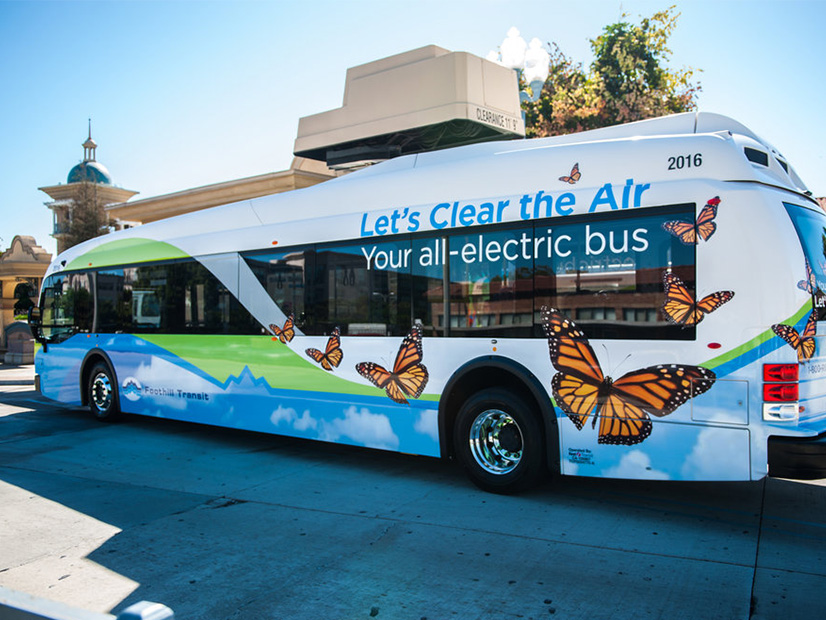
The California Air Resources Board could adopt by year-end several regulations intended to speed the transition to zero-emission vehicles, including the Advanced Clean Cars II rules.
Cars, trucks, commercial harbor craft and locomotives are covered by the proposed regulations, according to a presentation to the CARB board during a Jan. 27 meeting.
“The single element that binds these efforts and drives them all is the transition away from combustion,” CARB Executive Officer Richard Corey said.
Corey described Advanced Clean Cars II (ACC II), which would move the state to 100% zero-emission car sales by 2035, as “one of the most significant climate and clean air efforts for 2022.” The board is expected to consider the regulation on June 9, followed by a second hearing and vote in August.
ACC II would be a follow up to California’s current Advanced Clean Cars regulation, with the new regulation covering cars starting with model year 2026.
The regulations include a low-emission vehicle program, which sets emission standards for light- and medium-duty vehicles. The second piece of ACC is a ZEV program, which requires car manufacturers to supply a certain number of battery-electric, fuel-cell electric or plug-in hybrid vehicles each year.
As of October, 15 states and the District of Columbia had adopted California’s Advanced Clean Cars regulation.
A new feature of the proposed ACC II regulation is a system of environmental justice credits within the ZEV program. For example, automakers could receive credits for selling EVs at a discount to community programs offering services such as ZEV car-sharing. (See CARB Plan Would Allow Interstate Transfer of ZEV Credits.)
The proposal also includes warranty and durability requirements for ZEVs, which would “assure consumers that ZEVs can serve as true replacements to conventional vehicles,” Corey said.
“This will support providing dependable, high-quality zero-emission vehicles on the secondary market as well,” he added.
Cost Impact Study
As part of the regulatory process, the state Department of Finance released a Standardized Regulatory Impact Assessment (SRIA) for ACC II on Feb. 1.
ZEVs have higher upfront capital costs but lower operating costs, and the regulation should result in net savings for car buyers, the SRIA said.
The analysis estimated that the total cost of the proposed regulations from 2026 to 2040 would be $289 billion and total savings would be $338 billion, for a net savings of $49 billion.
The net savings includes about $16 billion in reduced tax and fee revenue, which would have negative implications for state and local government, according to the assessment.
The next step in the ACC II rulemaking will be an Initial Statement of Reasons (ISOR) that explains the justification for each provision in the regulation. CARB expects to release the ISOR in mid-April for 45 days of public comment.
Advanced Clean Fleets
CARB will also continue to work this year on the proposed Advanced Clean Fleets regulation, which aims to achieve zero-emission truck and bus fleets in the state by 2045, where feasible. The proposal would require a zero-emission transition for some vehicles sooner. All drayage trucks, for example, would be required to be zero-emission by 2035.
In connection with Advanced Clean Fleets, CARB has been holding a series of workshops on medium- and heavy-duty truck infrastructure. (See Calif. Ponders Heavy-duty FCEV Expansion; Concerns Arise over EV Truck Impact on Calif. Grid Reliability.)
CARB expects Advanced Clean Fleets to go to the board for a first hearing by the end of this year.
Boats, Trains
Last year, CARB proposed amendments to its Commercial Harbor Craft regulation, whose goal is to reduce emissions of diesel particulate matter, nitrogen oxides and reactive organic gases from diesel engines used on boats.
The proposed amendments would include a requirement for new and in-use short-run ferries to upgrade to zero-emission vessels by the end of 2025. Many tugboats would be required to use Tier 4 engines equipped with diesel particulate filters.
The harbor craft regulation is expected to go to the board for final approval in the next few months.
CARB is also working on an in-use locomotive regulation that it expects to present to the board in the fall. The proposal would apply to all line-haul, switch and passenger locomotives that operate within the state.
As proposed in a discussion draft of the regulation, locomotive operators would be required to place funds each year into a “spending account” based on the emissions of their locomotives. Zero-emission locomotives in a fleet would receive a credit, which could be deducted from the amount that must be paid into the spending account.
Operators would use money in the spending account to buy or lease locomotives that meet increasingly stringent emission standards, with a zero-emission requirement starting in 2035.
“Cleaning up railyards is crucial to cleaning up the air in our hardest-hit communities,” Corey said.


